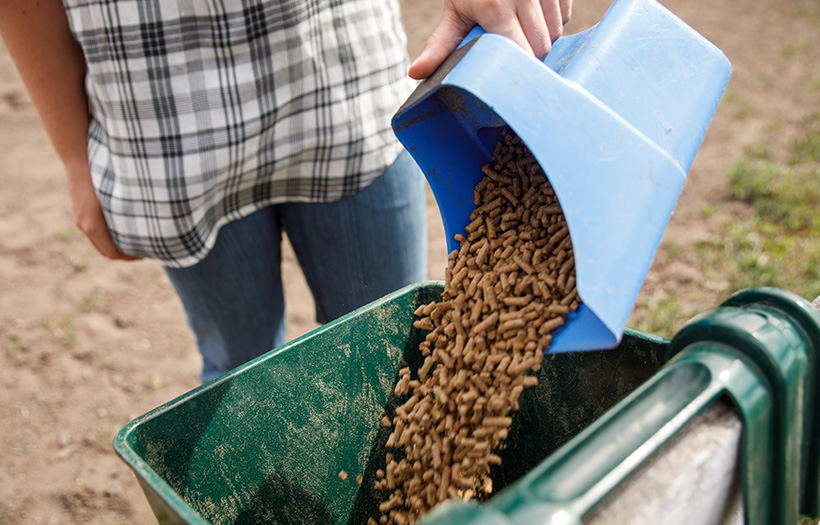Should I be Worried About a High Protein Feed?

All horses require adequate amounts of protein containing specific amino acids for maintenance, growth, reproduction and work. Proteins are important building blocks for body cells. In addition to impacting topline condition, hoof quality, feed intake, growth, physical activity, physical endurance, hair coat, production of milk and fetal development can all be impaired if protein intake and or quality of protein (i.e. availability of amino acids) is inadequate.
Most horse owners can name the protein level of the feed they are currently using. “A 12 percent pellet” is a common answer when asked that question – but how important is that protein percentage? While the total protein in a horse’s diet is important, and the law requires a guaranteed analysis to list crude protein on the feed tag, horses actually require essential amino acids. Many feed manufacturers are moving toward listing the minimum levels of specific amino acids on the tag, which can help horse owners to see the quality of the protein sources being used. The guaranteed analysis on the manufacturer’s feed tag is a good place to start, but keep in mind it doesn’t always tell the whole story of bioavailability. The best route is to not only reference the feed tag, but also let the horse tell you by how their hair coat, topline and hoof quality respond.
Beyond the grain portion of the diet, the hay source is a major factor to scrutinize regarding protein in an equine diet. Because hay makes up the majority of the diet, a lot of the protein in the diet comes from hay. To determine what a horse consumes, the horse owner needs to identify what the hay source is providing, and balance that together with the grain source.
Protein percentages required by the major categories of horses are listed below, however keep in mind that sometimes total dietary protein is met with the hay while essential amino acids are still in short supply. In this case the remaining essential amino acids will need to be supplied via the feed or supplements. Please note: these are for the total diet, not just the feed portion.
Foals: 16-18%
Weanlings: 14-16%
Yearlings: 12-14%
Mature horses: 10-12%
Lactating mares: 12-14%
In order to assess the total protein in your horse’s diet, follow this simple calculation:
( (Lbs Hay x Protein in Hay) + (Lbs Grain x Protein in Grain) ) / Total Lbs Fed of Hay + Grain = % Protein in Total Diet
Example: Mary feeds 20# of a 10% protein Grass Hay + 2# of a 30% Protein Feed each day to her 1100# 8 year old Quarter Horse.
((20x.10) +(2x.30))/22# = 11.8% Protein in the Total Diet
You can ascertain the protein in your hay by having it tested. Check with your local extension office, feed store or your equine veterinarian for a good forage testing lab. Hay protein can vary dramatically from one cutting to the next, even in the same field. Maturity at harvest, forage type and a variety of other factors can also influence the quality of the hay. Alfalfa hays are typically considered to be higher protein than timothy or other grass hays. However, if alfalfa is harvested late (overly mature), perhaps due to weather conditions, it can have lower protein than some grass hays that are harvested at the proper maturity. Because of these variables, it is always a good idea to know the facts behind your hay source rather than rough estimates.
Having a solid knowledge of the total diet your horse is getting, including what is being provided in the hay, will help you assess and correct deficiencies and give your horse the best chance for an ideal body condition and a topline that maximizes the horse’s genetic potential.
